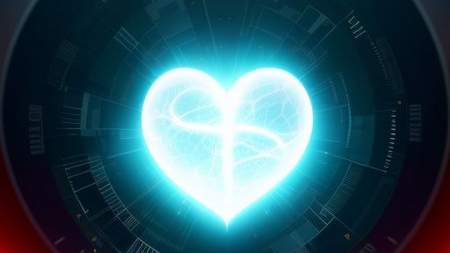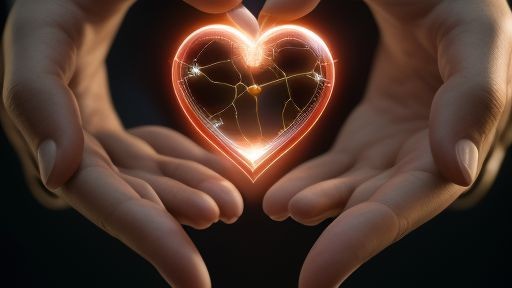Chapter 7: Wave-Particle Duality: The Many Faces of Love

Everyone is free to create his own world as he wants it, if he knows that the whole thing is responding to him. Neville Goddard
In quantum physics, wave-particle duality is a fundamental concept that illustrates how particles, such as electrons and photons, exhibit both wave-like and particle-like properties depending on the observations made. This duality challenges traditional paradigms, suggesting that entities can exist in multiple states simultaneously. In love, a similar duality exists, emphasizing that relationships can embody various forms and expressions as they evolve over time.
This chapter delves into the multifaceted nature of love, exploring how it can manifest in different ways throughout our relationships. We’ll discuss the interplay between different expressions of love - romantic, platonic, familial, and self-love - examining how they coexist and inform one another, just as waves and particles coexist in the quantum realm.
The concept of wave-particle duality began to take shape in the early 20th century with key contributions from various scientists.
- Max Planck and Blackbody Radiation: In 1900, Max Planck introduced the idea that electromagnetic radiation could be emitted or absorbed in discrete packets of energy called "quanta," laying the groundwork for quantum theory.
- Albert Einstein and the Photoelectric Effect: In 1905, Einstein explained the photoelectric effect, where light (which had been thought of as a wave) caused electrons to be emitted from a metal surface. His work demonstrated that light also behaves as if it were made up of particles, or "photons," leading to the notion that light has both wave-like and particle-like properties.
- Louis de Broglie and Matter Waves: In 1924, Louis de Broglie hypothesized that if light could exhibit particle-like behavior, then particles such as electrons could also exhibit wave-like properties. He introduced the idea of the "de Broglie wavelength," which posits that matter has an associated wavelength defined by the equation λ = h/p, where h represents Planck’s constant and p denotes the particle's momentum.
The wave-like behavior of particles is evident in several pivotal experiments. We already examined the double-slit experiment before.
De Broglie's hypothesis further supports the notion of wave characteristics in particles. For instance, electrons can be thought of as waves confined in an atom, which is fundamental to understanding atomic structure. The allowed energy states of electrons result from standing wave patterns around the nucleus, which explains the quantization of energy levels in atoms.
Wave-particle duality remains one of the most profound and puzzling features of quantum mechanics. It challenges classical intuitions and compels us to rethink the nature of reality, observation, and the limitations of measurement. The implications of wave-particle duality permeate modern technology, such as in the development of lasers, semiconductors, quantum computing.. and human connections. Lets dive in! :)
Romantic Love: The Dance of Passion and Intimacy
Romantic love often captures the imagination with its intensity and allure. It is the embodiment of desire, passion, and deep connection. Yet, romance is only one facet of love's complexity. While it may begin with a spark of chemistry or attraction, it requires ongoing nurturing to evolve into a deeper bond.
Consider the relationship of Maya and Daniel, who were initially drawn to each other through physical attraction and shared interests. In the early stages, their connection felt like a whirlwind, characterized by passionate encounters and exhilarating moments. They spent countless hours discovering each other, indulging in shared hobbies, and creating memories that seemed to hold the promise of forever.
However, as the relationship progressed, they discovered that the initial excitement began to wane. Enveloped in everyday life, the spark they once felt seemed to flicker in and out, leading to feelings of uncertainty. This transitional phase is where many couples falter, mistaking a lack of initial intensity for the end of their connection.
To navigate this period, Maya and Daniel recognized the need to explore the deeper dimensions of their love. They began incorporating practices that fostered emotional intimacy - scheduled date nights, open conversations about their hopes and fears, and shared vulnerabilities. By investing in the relational aspect of their connection, they allowed their romantic love to evolve into a more profound partnership defined by mutual support and deeper understanding.
Healthy relationships maintain a careful equilibrium, respecting each partner's individuality (the particles) while also embracing the collective identity of the couple (the wave).
Just as wave-particle duality suggests that entities can embody multiple forms, romantic love, when nurtured, transforms into a more stable and fulfilling bond that encompasses both passion and intimacy.
Platonic Love: The Bonds of Friendship
When exploring the many faces of love, platonic love occupies a significant space, highlighting the connections forged through friendship. Platonic love is characterized by deep affection, loyalty, and understanding, often forming the backbone of many romantic relationships. While distinct from romantic love, platonic bonds are equally vital, often providing emotional support and companionship that nurtures the soul.
Take the friendship between Dora and Zsolt, two individuals whose connection exemplifies the meaningful nature of platonic love. Their bond was built on shared experiences, laughter, and unwavering support. They navigated life’s ups and downs together, celebrating each other's achievements and providing comfort during challenging moments.
As they grew older, Dora and Zsolt faced individual challenges that tested their resiliency. Dora struggled with a career transition, while Zsolt dealt with family issues that weighed heavily on him. In these moments, the platonic love they shared emerged as a lifeline. Their open and honest communication allowed them to talk through their fears, frustrations, and aspirations.
Through this shared vulnerability, their friendship deepened, providing both person with a sense of belonging and understanding that transcended romantic feelings. They learned to acknowledge the importance of their platonic bond while supporting each other’s personal growth. This intertwining of friendship with their individual struggles enriched their lives, allowing them to appreciate the deeper dimensions of love that exist beyond romance.
As wave-particle duality reveals, friendship can be both a wave and a particle - a beautiful amalgamation of affection and support without the complexities of romantic relationships. This form of love enriches our lives, grounding us as individuals and offering emotional support in times of need.
I found it fascinating that two seemingly unrelated fields—quantum mechanics, a branch of the natural sciences, and Cosmic Attachment Theory, which falls under the human sciences—share a deep connection. Although Cosmic Attachment Theory is less well-known and more theoretical, it proposes that humans possess an intrinsic bond with the cosmos, implying that our psychological and emotional states are shaped by universal events. This theory highlights the interconnectedness of everything and suggests that cosmic occurrences can resonate with human experiences.
amilial Love: The Ties That Bind
Familial love presents another layer of the love spectrum, encompassing the deep bonds forged within family structures. This type of love is often foundational, shaping our understanding of relationships and influencing how we love others throughout our lives. It can be both nurturing and complex, providing a sense of belonging while also challenging individuals to confront familial dynamics.
Consider the relationship between Zita and her parents. Growing up, Zita experienced a close-knit family environment characterized by warmth, support, and shared traditions. From holiday gatherings filled with laughter to heartfelt conversations during family dinners, familial love formed the backbone of her upbringing.
However, like many families, Zita's relationship with her parents was not without conflict. As she entered young adulthood, differences in perspectives and values began to surface. Zita yearned for independence and was determined to carve her own path, while her parents grappled with their desire to guide and protect her.
During a particularly heated conversation, Zita expressed her frustrations, sparking a rift that left her feeling misunderstood. However, this conflict ultimately became a turning point in their relationship. Recognizing the importance of familial bonds, Zita and her parents committed to open dialogue. They began sharing their experiences and viewpoints, finding common ground and re-establishing trust.
Through this process, Zita learned that familial love can carry layers of complexity but also holds the potential for healing and growth. Their willingness to embrace the duality of their relationship - both supportive yet challenging - allowed their bond to deepen. They emerged from their difficulties with a renewed appreciation for the unique facets of familial love, emphasizing that behind every disagreement lies the potential for understanding and connection.
Self-Love: The Foundation of All Love
Amidst the exploration of different forms of love, self-love emerges as a crucial component that underpins every relationship. Self-love is not mere self-indulgence; rather, it embodies a deep appreciation for oneself, fostering a healthy mindset that empowers individuals to engage in loving relationships with others. This concept of love, much like the wave-particle duality, reflects the importance of recognizing one's worth while simultaneously caring for others.
Sarah’s journey exemplifies the power of self-love. For many years, she sought validation from external sources—friends, partners, and social media. Despite her efforts, she often felt unfulfilled. It wasn’t until she faced a difficult period of self-reflection that she began to understand the importance of nurturing her relationship with herself.
Through journaling, mindfulness, and self-therapy, Sarah explored her values, aspirations, and insecurities. She recognized her strengths and weaknesses, learning to embrace both sides of herself. This practice of self-acceptance led her to develop a healthier relationship with herself, allowing her to communicate her needs more effectively in her relationships with others.
As her self-love blossomed, Sarah’s connections with friends and partners flourished. She discovered that when she enjoyed her own well-being, she became more present and authentic in her relationships. This newfound love for herself created a ripple effect, enriching her interactions and fostering deeper connections with those around her.
Self-love embodies the wave-particle duality in that it reflects the capacity to be whole within oneself while also permitting harmony within external relationships. By understanding and embracing self-love, individuals enhance their ability to love others fully, fostering interconnections that celebrate love in its many forms.
The Interconnectedness of Love
As we explore the various facets of love - romantic, platonic, familial, and self-love - it becomes evident that they exist in a dynamic interrelationship. Each form of love is not isolated; rather, they interact and influence one another, contributing to the holistic experience of love.
For instance, platonic love may enhance romantic relationships by providing emotional support and companionship, while self-love lays the groundwork for healthier familial dynamics. In turn, familial love can offer a sense of belonging that reinforces an individual's ability to connect with friends and partners.
Just as wave-particle duality demonstrates the interplay of different states, the various expressions of love enable individuals to experience connection and fulfillment on multiple levels. Recognizing these interconnected strands enriches our understanding of love, reminding us that while love may manifest in different forms, it ultimately converges into a singular essence - an expression of human connection that transcends boundaries.
Embracing Love's Complexity
The concept of wave-particle duality offers an illuminating lens through which we can appreciate the multifaceted nature of love. By understanding that love can exist in various forms simultaneously—romantic, platonic, familial, and self-love—we empower ourselves to embrace the complexity of our relationships.
By honoring the many faces of love, we cultivate compassion, empathy, and a deeper appreciation for the connections that shape our existence. Just as waves and particles coexist in the universe, the diverse forms of love enrich our human experience, inviting us to celebrate and cherish the tapestry of relationships that define our lives in the quantum realm.
We may be living in the quantum realm, where the boundaries of reality blur and the behavior of particles defies conventional understanding. In this unique dimension, entities can exist in multiple states simultaneously, and observations can fundamentally alter outcomes.
Our everyday experiences may be underpinned by these quantum principles, suggesting that at a fundamental level, reality is interconnected and influenced by the observer, challenging our perceptions of existence and individuality. In a sense, the quantum realm invites us to reconsider the very fabric of reality and our place within it.
Join me on my exploration and become part of my quantum journey. This is more than just about a new computer or technical evolution; it represents a fundamental transformation—a revolution of technology, science, and thought. Our values, human perception, and everything we know are about to shift. We stand on the threshold of a new era. I am dedicated to transforming myself and you for the quantum age.
This is the way.

